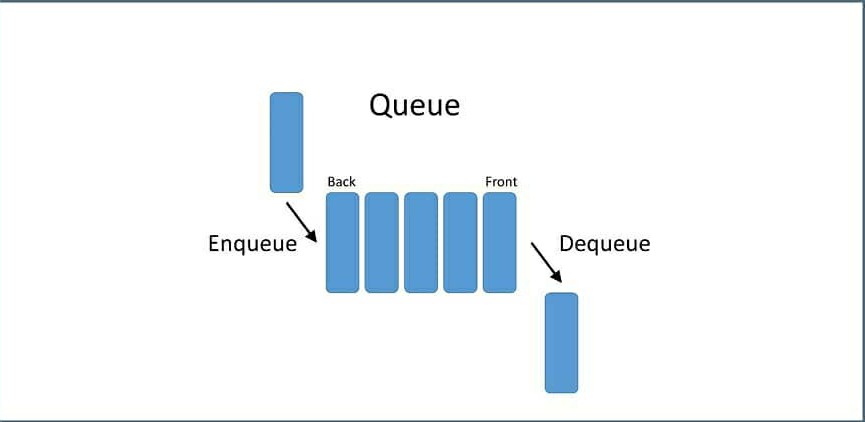
Given the Stack class below, implement a Queue class using two stacks
stack1 = [] stack2 = []
Solution
The key insight is that a stack reverses order (while a queue doesn’t). A sequence of elements pushed on a stack comes back in reversed order when popped. Consequently, two stacks chained together will return elements in the same order, since reversed order reversed again is original order.
We use an in-stack that we fill when an element is enqueued and the dequeue operation takes elements from an out-stack. If the out-stack is empty we pop all elements from the in-stack and push them onto the out-stack.
class Queue2Stacks(object):
def __init__(self):
# Two Stacks
self.instack = []
self.outstack = []
def enqueue(self,element):
# Add an enqueue with the "IN" stack
self.instack.append(element)
def dequeue(self):
if not self.outstack:
while self.instack:
# Add the elements to the outstack to reverse the order when called
self.outstack.append(self.instack.pop())
return self.outstack.pop()
Test Your Solution
You should be able to tell with your current knowledge of Stacks and Queues if this is working as it should. For example, the following should print as such:
"""
RUN THIS CELL TO CHECK THAT YOUR SOLUTION OUTPUT MAKES SENSE AND BEHAVES AS A QUEUE
"""
q = Queue2Stacks()
for i in xrange(5):
q.enqueue(i)
for i in xrange(5):
print(q.dequeue())
0
1
2
3
4
Recommended: Implementation of Stack in Python
Follow Me
If you like my post please follow me to read my latest post on programming and technology.
Leave a Comment